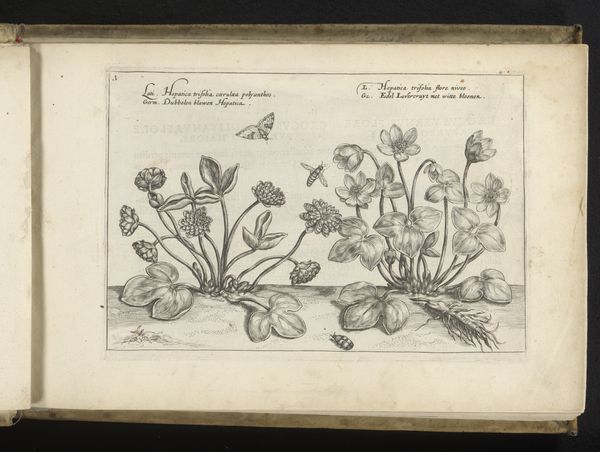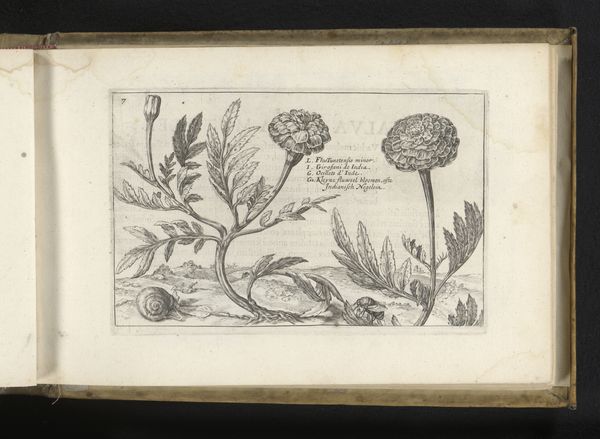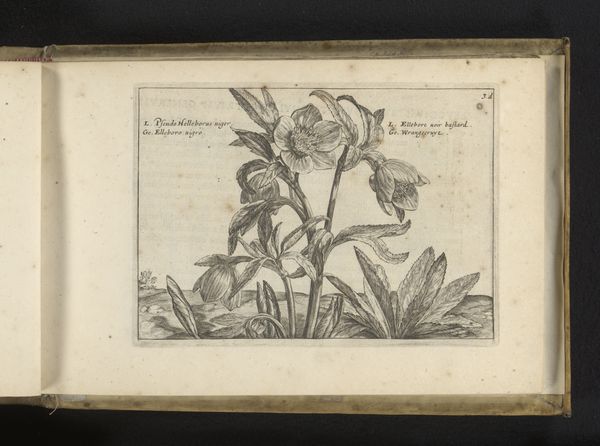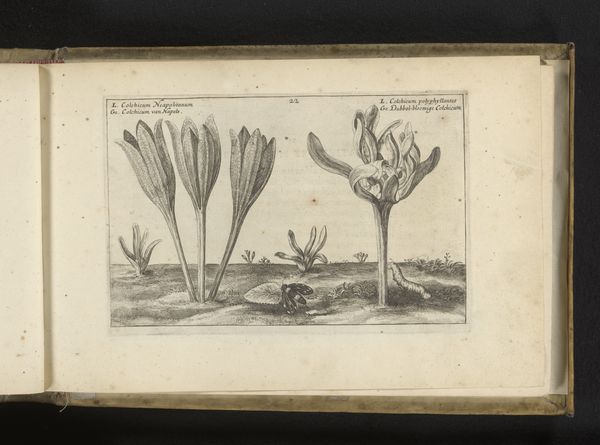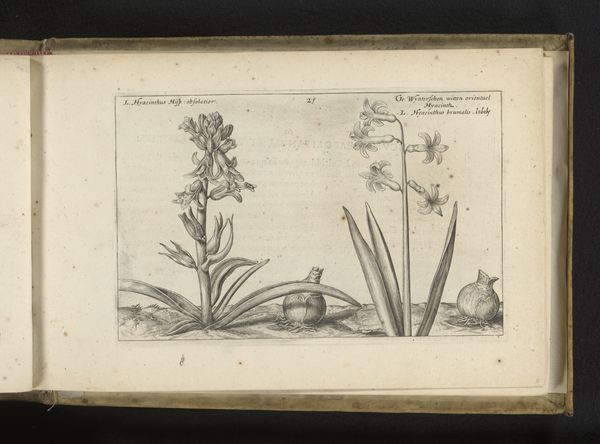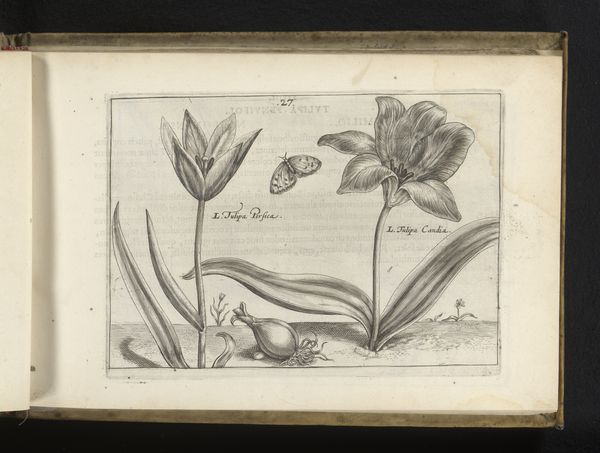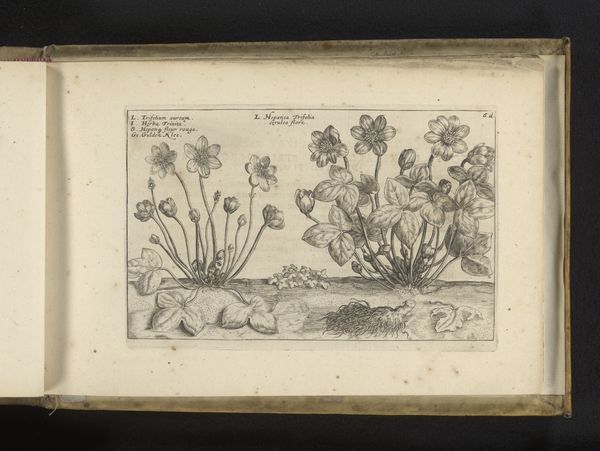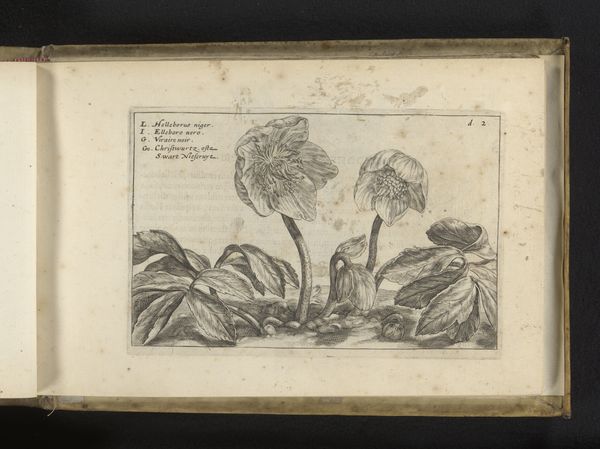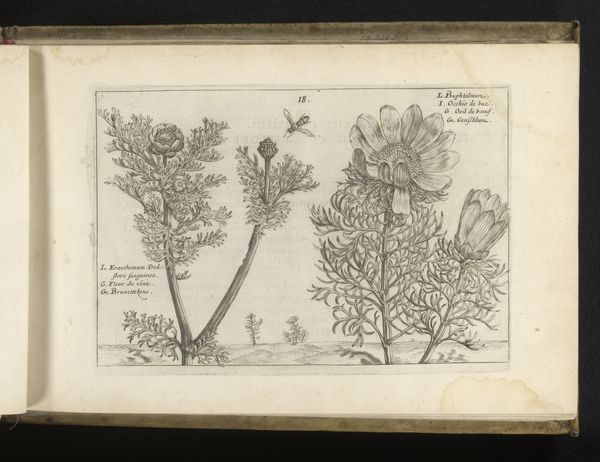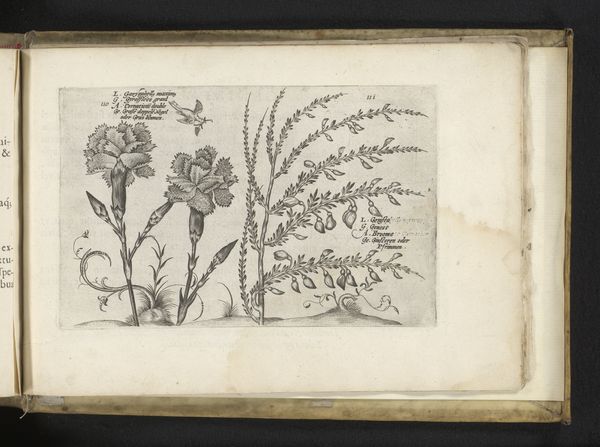
drawing, print, paper, ink, engraving
#
drawing
#
aged paper
#
toned paper
# print
#
sketch book
#
flower
#
figuration
#
paper
#
personal sketchbook
#
ink
#
pen-ink sketch
#
pen and pencil
#
line
#
pen work
#
sketchbook drawing
#
storyboard and sketchbook work
#
northern-renaissance
#
sketchbook art
#
engraving
Dimensions: height 136 mm, width 205 mm
Copyright: Rijks Museum: Open Domain
Crispijn van de Passe the Younger created this print titled ‘Gele monnikskap’ - or Yellow Monkshood - sometime in the 17th century. During this period, the Dutch Republic was not only a center for global commerce but also a hub of scientific and artistic innovation. Van de Passe's detailed engraving reflects the era’s intense interest in natural history and botany. But, what does it mean to name a flower after a monk’s hood? The name points to the pervasive influence of the church at the time. Here the natural world is classified, understood, and named, through the lens of religious culture. Yet the very act of detailed scientific observation also subtly challenges religious dogma, proposing an alternative way of knowing and seeing the world. Van de Passe’s intricate print of a seemingly simple flower thus embodies a moment of cultural and intellectual transition, where faith and reason begin to negotiate their respective claims on truth.
Comments
No comments
Be the first to comment and join the conversation on the ultimate creative platform.
